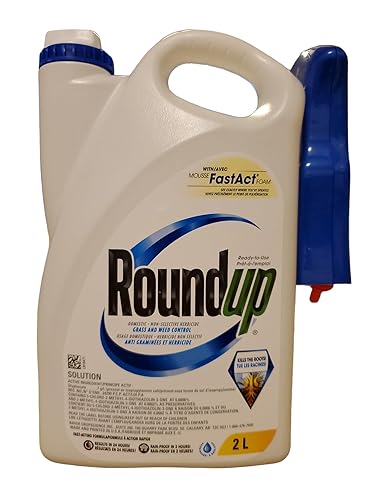 OTTAWA — An influential research article that claimed a popular weed-killer was safe has been retracted 25 years after it was published, prompting environment groups in Canada to ask the federal government to review the science on glyphosate use. Health Canada said Thursday that its decision to approve glyphosate will not be affected by this development. Last week, the journal Regulatory Toxicology and Pharmacology retracted a paper published in 2000 that concluded the herbicide glyphosate, the main ingredient in Roundup, is safe for humans. …The retraction notice cited documents made public through litigation in the US that suggest employees of Monsanto may have helped write the article without proper acknowledgment. …Health Canada said in a written statement that “the retraction of this review does not affect our previous review conclusions” because the department also independently evaluated the primary data sources used in the 2000 review paper.
OTTAWA — An influential research article that claimed a popular weed-killer was safe has been retracted 25 years after it was published, prompting environment groups in Canada to ask the federal government to review the science on glyphosate use. Health Canada said Thursday that its decision to approve glyphosate will not be affected by this development. Last week, the journal Regulatory Toxicology and Pharmacology retracted a paper published in 2000 that concluded the herbicide glyphosate, the main ingredient in Roundup, is safe for humans. …The retraction notice cited documents made public through litigation in the US that suggest employees of Monsanto may have helped write the article without proper acknowledgment. …Health Canada said in a written statement that “the retraction of this review does not affect our previous review conclusions” because the department also independently evaluated the primary data sources used in the 2000 review paper.

 The December edition — issued by FSC Canada — includes several major updates: the Canadian home-improvement and construction retailer RONA has become the first such retailer in Canada to use DoorDash for distribution; there’s news that Chantiers Chibougamau reaffirmed its commitment to FSC certification; Esri donated $1.65 million worth of geospatial technology to FSC; and there are recap highlights from the 2025 General Assembly in Panama. The newsletter also announces the launch of a new registry for certificate holders (ES Registry), publishes a new “Advice Note” on Indicator 55 of the Risk Assessment Framework, and opens two major consultations — one on Indigenous Cultural Landscapes and another to revise FSC’s Chain-of-Custody standards.
The December edition — issued by FSC Canada — includes several major updates: the Canadian home-improvement and construction retailer RONA has become the first such retailer in Canada to use DoorDash for distribution; there’s news that Chantiers Chibougamau reaffirmed its commitment to FSC certification; Esri donated $1.65 million worth of geospatial technology to FSC; and there are recap highlights from the 2025 General Assembly in Panama. The newsletter also announces the launch of a new registry for certificate holders (ES Registry), publishes a new “Advice Note” on Indicator 55 of the Risk Assessment Framework, and opens two major consultations — one on Indigenous Cultural Landscapes and another to revise FSC’s Chain-of-Custody standards. British Columbia’s logging agency has changed a policy that conserved remnant old-growth forest in the province’s northwest, with a government briefing note showing a plan to open those areas for harvesting has been approved. The note, obtained by The Canadian Press and written by a BC Timber Sales manager in the Babine region, acknowledged the shift “may invoke scrutiny” from conservationist environmental groups. It says First Nations in the Bulkley, Morice and Lakes timber supply areas do not support old-growth logging deferrals recommended by a provincially appointed panel in 2021,and continuing to conserve remnant stands “does not demonstrate respect of the First Nations’ responses” to that process. …Independent ecologist Rachel Holt says the briefing note demonstrates a lack of understanding within BC Timber Sales about “the importance of … these irrecoverable ecological values.” But the crisis in B.C.’s forests is not just ecological.
British Columbia’s logging agency has changed a policy that conserved remnant old-growth forest in the province’s northwest, with a government briefing note showing a plan to open those areas for harvesting has been approved. The note, obtained by The Canadian Press and written by a BC Timber Sales manager in the Babine region, acknowledged the shift “may invoke scrutiny” from conservationist environmental groups. It says First Nations in the Bulkley, Morice and Lakes timber supply areas do not support old-growth logging deferrals recommended by a provincially appointed panel in 2021,and continuing to conserve remnant stands “does not demonstrate respect of the First Nations’ responses” to that process. …Independent ecologist Rachel Holt says the briefing note demonstrates a lack of understanding within BC Timber Sales about “the importance of … these irrecoverable ecological values.” But the crisis in B.C.’s forests is not just ecological.

 NOOTKA SOUND, BC — Optimism for the future of Chinook salmon is swimming up Muchalat River near the town of Gold River, BC in Mowachaht/Muchalaht First Nations (MMFN) territory. Kent O’Neill, of the Nootka Sound Watershed Society (NSWS), says he observed hundreds of fish using a newly restored gravel spawning pad this fall. …Navigating a storm of challenges from historical logging practices to droughty summers, Chinook salmon in the region were assessed as Threatened by the Committee on the Status of Endangered Wildlife in Canada in 2020. To revive local Chinook salmon stocks, a collective effort led by NSWS, Ecofish Research, a Trinity Consultants Canada team, MMFN and the Pacific Salmon Foundation (PSF) was hatched. …Western Forest Products (WFP) also played a major role by providing the gravel and access to the forest service roads. “We wouldn’t have been able to do this project without WFP,” said O’Neill.
NOOTKA SOUND, BC — Optimism for the future of Chinook salmon is swimming up Muchalat River near the town of Gold River, BC in Mowachaht/Muchalaht First Nations (MMFN) territory. Kent O’Neill, of the Nootka Sound Watershed Society (NSWS), says he observed hundreds of fish using a newly restored gravel spawning pad this fall. …Navigating a storm of challenges from historical logging practices to droughty summers, Chinook salmon in the region were assessed as Threatened by the Committee on the Status of Endangered Wildlife in Canada in 2020. To revive local Chinook salmon stocks, a collective effort led by NSWS, Ecofish Research, a Trinity Consultants Canada team, MMFN and the Pacific Salmon Foundation (PSF) was hatched. …Western Forest Products (WFP) also played a major role by providing the gravel and access to the forest service roads. “We wouldn’t have been able to do this project without WFP,” said O’Neill.

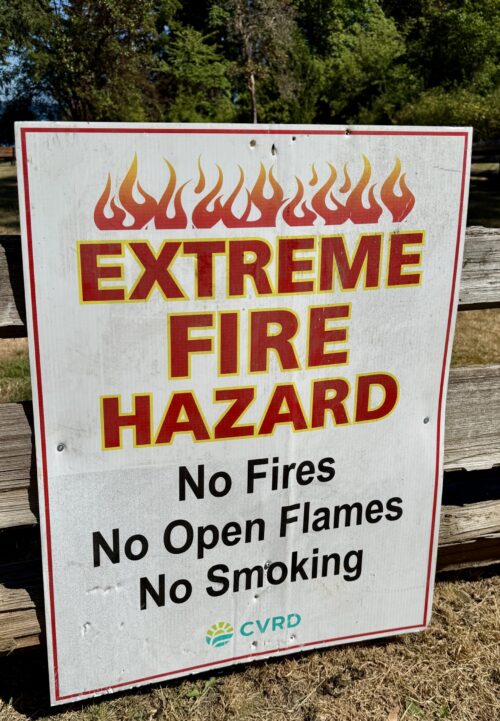 FORT ST. JOHN, B.C. — The B.C. Ministry of Forests is encouraged that the Government of Canada has taken a huge step to amp up aerial firefighting capacity. Anthony Housefather, parliamentary secretary to Eleanor Olszewski, federal minister of emergency management and community resilience and minister responsible for Prairies economic development, recently highlighted a new multi-million-dollar investment of over $257.6 million for four years to Natural Resources Canada. The funds will be used to lease firefighting aircrafts, which can include waterbombers or other aircrafts to deliver water or fire retardant drops in hard-to-reach areas. …The Ministry of Forests will be hosting a
FORT ST. JOHN, B.C. — The B.C. Ministry of Forests is encouraged that the Government of Canada has taken a huge step to amp up aerial firefighting capacity. Anthony Housefather, parliamentary secretary to Eleanor Olszewski, federal minister of emergency management and community resilience and minister responsible for Prairies economic development, recently highlighted a new multi-million-dollar investment of over $257.6 million for four years to Natural Resources Canada. The funds will be used to lease firefighting aircrafts, which can include waterbombers or other aircrafts to deliver water or fire retardant drops in hard-to-reach areas. …The Ministry of Forests will be hosting a 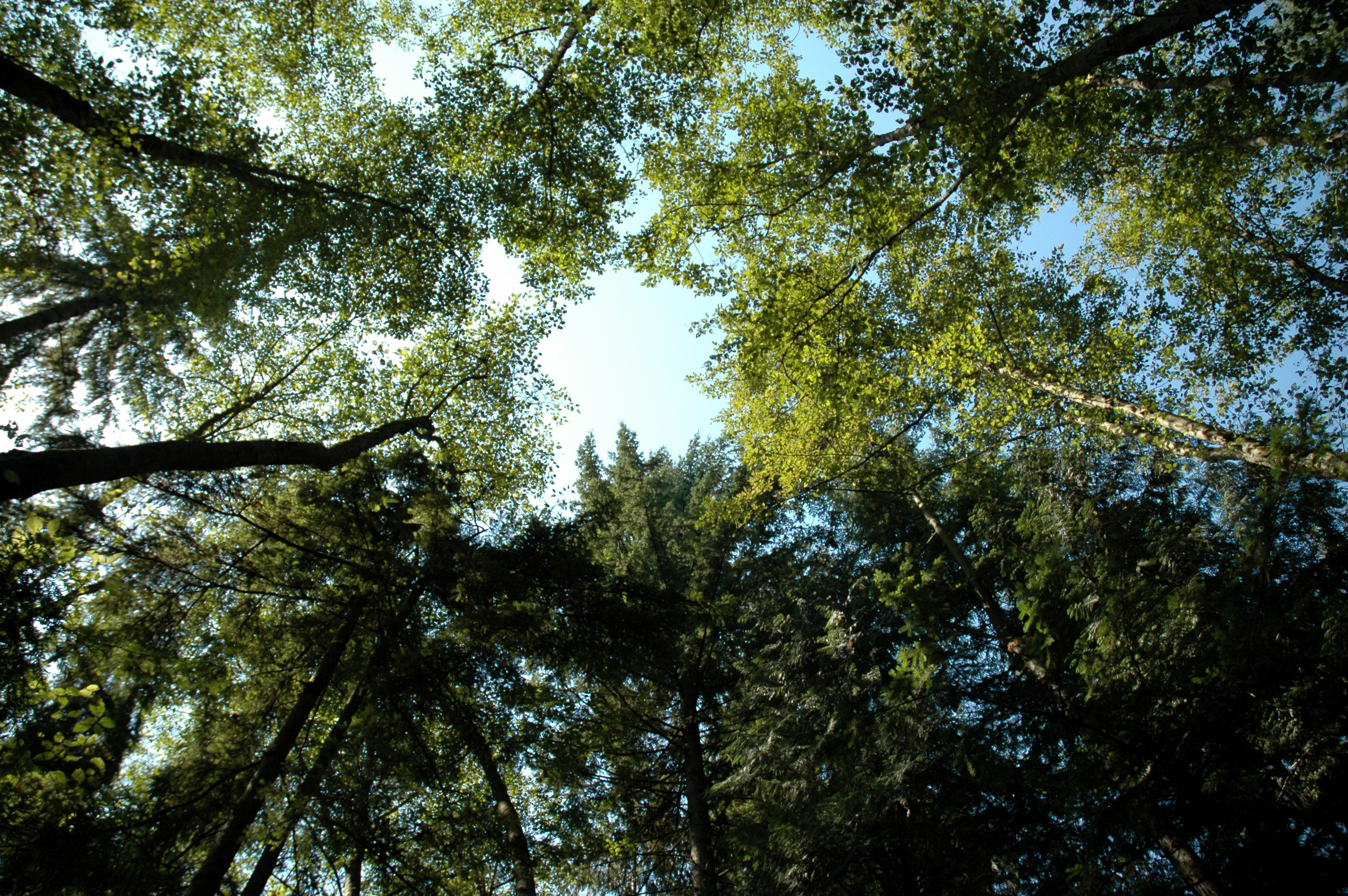 Joshua Wright says a yellow cedar tree he photographed last year was the largest he’d ever seen in a decade of hiking around Vancouver Island. …Wright measured the cedar’s diameter at 2.79 metres, a size that should have ensured protection for the tree, along with a one-hectare buffer under provincial law. But when he returned to the area south of Gold River in June, Wright says the tree had been felled as part of a logging operation approved by the province. …the area where Wright documented the yellow cedar overlaps significantly with a category of old-growth representing the largest trees left standing. …Yet the deferrals required support from First Nations to go ahead, and at the time, there was no significant funding to help communities offset foregone revenues. …the yellow cedar was felled in an area where Matchlee Ltd. Partnership, majority owned by Mowachaht/Muchalaht First Nation, holds a non-renewable forest licence.
Joshua Wright says a yellow cedar tree he photographed last year was the largest he’d ever seen in a decade of hiking around Vancouver Island. …Wright measured the cedar’s diameter at 2.79 metres, a size that should have ensured protection for the tree, along with a one-hectare buffer under provincial law. But when he returned to the area south of Gold River in June, Wright says the tree had been felled as part of a logging operation approved by the province. …the area where Wright documented the yellow cedar overlaps significantly with a category of old-growth representing the largest trees left standing. …Yet the deferrals required support from First Nations to go ahead, and at the time, there was no significant funding to help communities offset foregone revenues. …the yellow cedar was felled in an area where Matchlee Ltd. Partnership, majority owned by Mowachaht/Muchalaht First Nation, holds a non-renewable forest licence.

 A BC Resource Sector Coalition says current federal and provincial policymaking has become unpredictable enough to justify an immediate pause on all implementation and action under Declaration on the Rights of Indigenous Peoples Act (DRIPA). …“We write to you on behalf of thousands of British Columbians whose livelihoods, communities, and futures are tied to the natural resource sector. Today, those livelihoods are at risk,” the letter begins. “A series of federal and provincial policy decisions have destabilized the industries that sustain our province and are eroding the economic foundations of British Columbia.” …The coalition is composed of a cross-industry membership spanning land and marine activity: BCCA, Geoduck Underwater Harvesters Association, ICBA, Deep Sea Trawlers Association of BC, Guide Outfitters Association of British Columbia, Pacific Prawn Fishermen’s Association, North West Loggers Association, and the Council of Marine Carriers.
A BC Resource Sector Coalition says current federal and provincial policymaking has become unpredictable enough to justify an immediate pause on all implementation and action under Declaration on the Rights of Indigenous Peoples Act (DRIPA). …“We write to you on behalf of thousands of British Columbians whose livelihoods, communities, and futures are tied to the natural resource sector. Today, those livelihoods are at risk,” the letter begins. “A series of federal and provincial policy decisions have destabilized the industries that sustain our province and are eroding the economic foundations of British Columbia.” …The coalition is composed of a cross-industry membership spanning land and marine activity: BCCA, Geoduck Underwater Harvesters Association, ICBA, Deep Sea Trawlers Association of BC, Guide Outfitters Association of British Columbia, Pacific Prawn Fishermen’s Association, North West Loggers Association, and the Council of Marine Carriers.




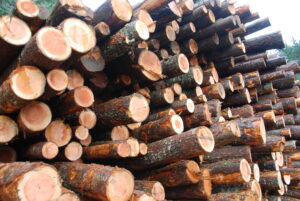 Prince George residents had better pay attention to last week’s report showing that unelected bureaucrats in Victoria are playing politics when they decide how much can be logged up here. I’ve been informed that our unelected Office of the Chief Forester, currently led by Shane Berg, is figuring out the Annual Allowable Cut (AAC) in the Prince George Timber Supply Area for the next 10 years. The process, known as a Timber Supply Review (TSR), masquerades as scientific and expert-driven, but in reality it’s politics. The amount we log is largely pre-determined and the game is how to manipulate the models and forests to achieve it. That’s why we get glyphosate with our blueberries and fertilizer-poisoned cattle. It’s why we don’t thin the plantations or do more selective logging. …The Office of Chief Forester prioritizes the “timber supply” over diverse, fire-resistant forests, as if the two are mutually exclusive.
Prince George residents had better pay attention to last week’s report showing that unelected bureaucrats in Victoria are playing politics when they decide how much can be logged up here. I’ve been informed that our unelected Office of the Chief Forester, currently led by Shane Berg, is figuring out the Annual Allowable Cut (AAC) in the Prince George Timber Supply Area for the next 10 years. The process, known as a Timber Supply Review (TSR), masquerades as scientific and expert-driven, but in reality it’s politics. The amount we log is largely pre-determined and the game is how to manipulate the models and forests to achieve it. That’s why we get glyphosate with our blueberries and fertilizer-poisoned cattle. It’s why we don’t thin the plantations or do more selective logging. …The Office of Chief Forester prioritizes the “timber supply” over diverse, fire-resistant forests, as if the two are mutually exclusive. I am writing to express my concern for the fate of B.C.’s remaining old growth forests, including the globally rare and at-risk Inland Temperate Rainforest. Most of this endangered forest is still not protected, and thus all creatures who dwell therein are equally unprotected. The Valhalla Wilderness Society … is putting forth a plan to protect the remaining intact Inland Temperate Rainforests through its three park proposals: the Rainbow-Jordan Wilderness proposal; the Selkirk Mountains Ancient Forest Park proposal; and the Quesnel Lake Wilderness proposal. This protection is crucial for the survival of these rare temperate rainforests. David Eby, you are undoubtedly well informed as to the many scientific reasons for protecting more forest, especially old growth forests…Importantly, only the BC Park Act and the BC Protected Areas Act can provide secure protection to preserve forest for future generations. Please adopt and implement the VWS park proposals as quickly as possible.
I am writing to express my concern for the fate of B.C.’s remaining old growth forests, including the globally rare and at-risk Inland Temperate Rainforest. Most of this endangered forest is still not protected, and thus all creatures who dwell therein are equally unprotected. The Valhalla Wilderness Society … is putting forth a plan to protect the remaining intact Inland Temperate Rainforests through its three park proposals: the Rainbow-Jordan Wilderness proposal; the Selkirk Mountains Ancient Forest Park proposal; and the Quesnel Lake Wilderness proposal. This protection is crucial for the survival of these rare temperate rainforests. David Eby, you are undoubtedly well informed as to the many scientific reasons for protecting more forest, especially old growth forests…Importantly, only the BC Park Act and the BC Protected Areas Act can provide secure protection to preserve forest for future generations. Please adopt and implement the VWS park proposals as quickly as possible. 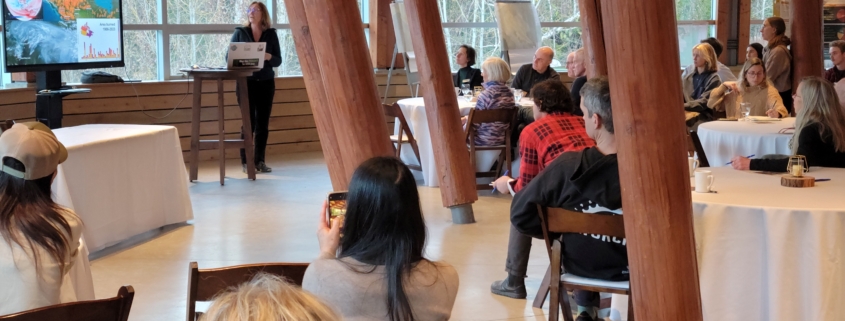
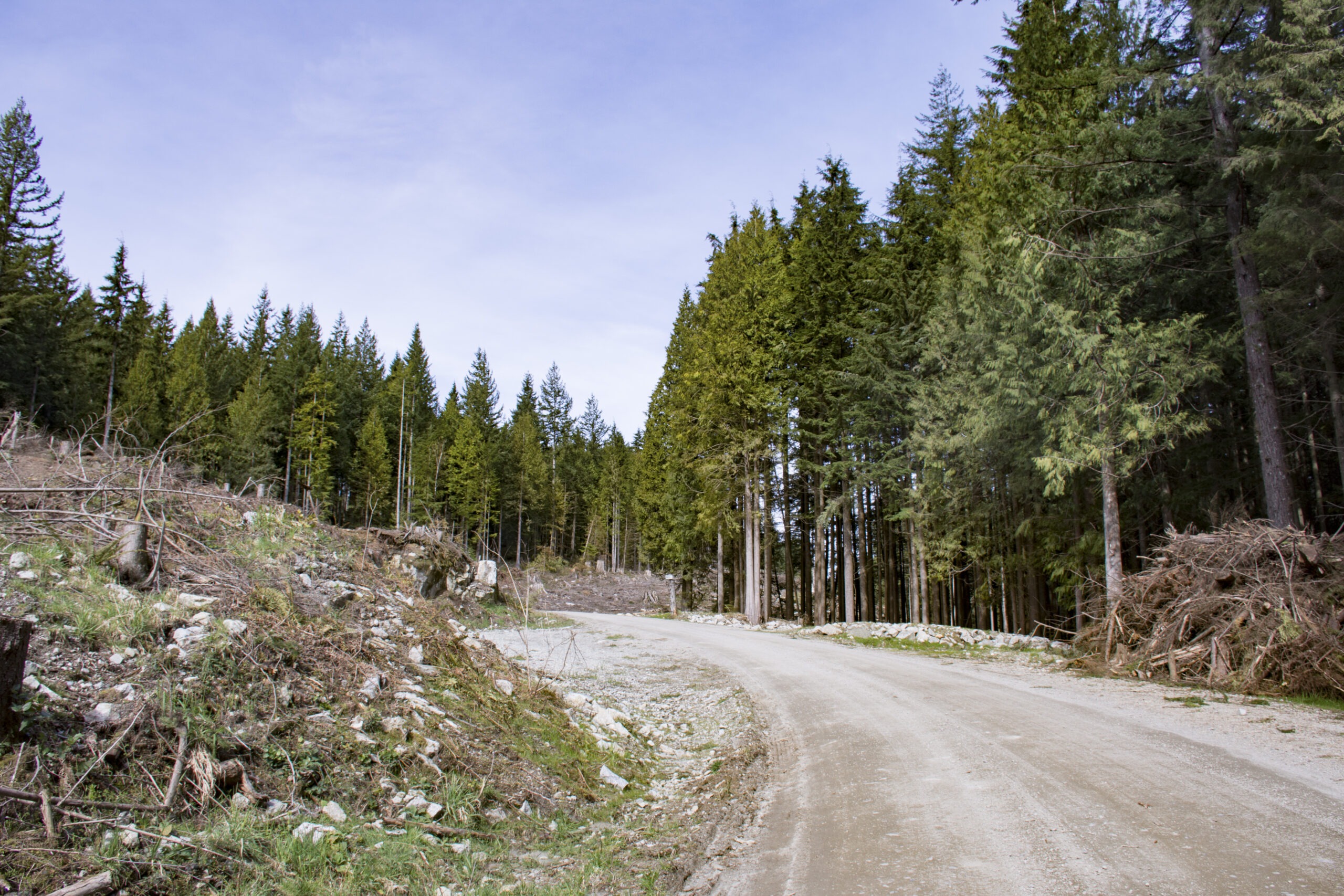 We tend to take logging roads for granted as an inherent right of access to Crown land. Their importance was recently reinforced when, just before the first snowfall, we travelled on one of the longest continuous and scenic forestry roads in the province. Ontario’s forest industry is critical to the provincial economy and many northern and rural communities. In 2023, the forest industry contributed $5.4 billion to Ontario’s Gross Domestic Product (GDP) and generated $21.6 billion in total revenue. The sector supported approximately 128,000 direct, indirect, and induced jobs in 2024, many of which are in Indigenous, rural, and northern communities. …The Ontario Forest Industries Association’s policy advisor, Adrian Smith said, “Forest access roads serve far more than the forestry sector. Built and maintained by our sector, they provide vital infrastructure. Forestry companies invest millions of dollars in grading, resurfacing, bridge and culvert upkeep, and winter snow clearing to keep this extensive network safe and reliable.
We tend to take logging roads for granted as an inherent right of access to Crown land. Their importance was recently reinforced when, just before the first snowfall, we travelled on one of the longest continuous and scenic forestry roads in the province. Ontario’s forest industry is critical to the provincial economy and many northern and rural communities. In 2023, the forest industry contributed $5.4 billion to Ontario’s Gross Domestic Product (GDP) and generated $21.6 billion in total revenue. The sector supported approximately 128,000 direct, indirect, and induced jobs in 2024, many of which are in Indigenous, rural, and northern communities. …The Ontario Forest Industries Association’s policy advisor, Adrian Smith said, “Forest access roads serve far more than the forestry sector. Built and maintained by our sector, they provide vital infrastructure. Forestry companies invest millions of dollars in grading, resurfacing, bridge and culvert upkeep, and winter snow clearing to keep this extensive network safe and reliable.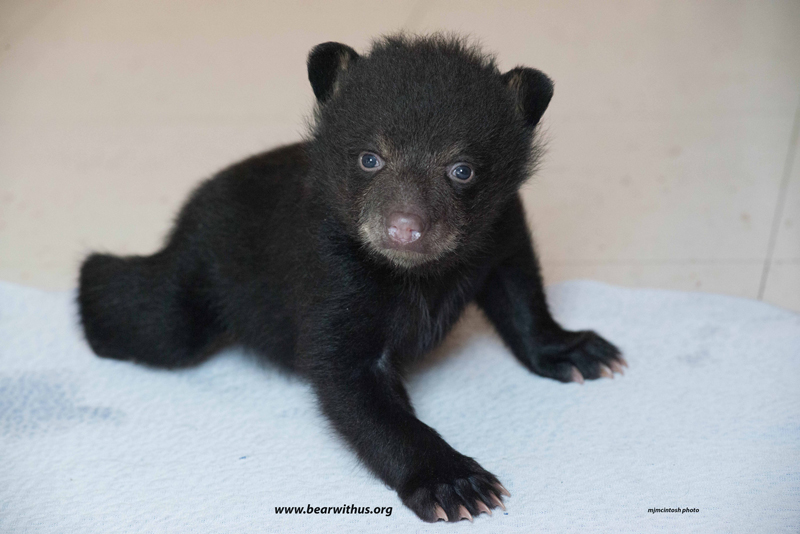
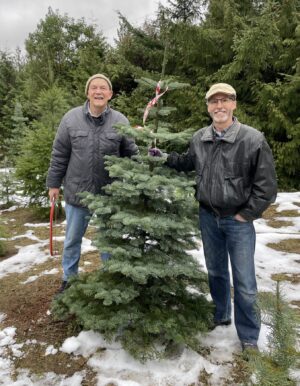 TEXAS — At Santa’s Christmas Trees in Grapevine, owner Kevin Keck has a simple motto: “Every tree deserves a home, and every home deserves a tree.” To keep people happy in a challenging economy, he has not raised his prices. …Part of why he’s able to keep his prices down is that his trees aren’t impacted by tariffs. “No, our trees come from Oregon, so they’re all United States-grown and shipped,” Keck said. “So, the tariffs won’t affect us any.”…But artificial trees are impacted. According to the National Christmas Tree Association, about 80% of fake trees in the US are manufactured in China. Some U.S. importers say those tariffs could raise the prices on trees by 10-20%. Keck thinks that the increase will make more people consider live trees.
TEXAS — At Santa’s Christmas Trees in Grapevine, owner Kevin Keck has a simple motto: “Every tree deserves a home, and every home deserves a tree.” To keep people happy in a challenging economy, he has not raised his prices. …Part of why he’s able to keep his prices down is that his trees aren’t impacted by tariffs. “No, our trees come from Oregon, so they’re all United States-grown and shipped,” Keck said. “So, the tariffs won’t affect us any.”…But artificial trees are impacted. According to the National Christmas Tree Association, about 80% of fake trees in the US are manufactured in China. Some U.S. importers say those tariffs could raise the prices on trees by 10-20%. Keck thinks that the increase will make more people consider live trees.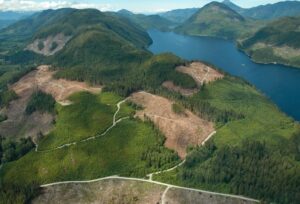 Retired federal wildlife surveyor Erich Reeder… has seen centuries-old forests targeted for destruction as President Donald Trump’s administration accelerates logging on federal lands nationwide. Earlier this year, loggers cleared out most of the forest in Galagher Canyon, part of a federal timber sale an hour south of Eugene, Oregon. …“The Trump administration is ordering the last of our publicly-owned mature and old-growth forests to be cut off and sold,” Reeder, 59, said. …Legal and political battles are heating up between Trump, who is eager to bolster the timber industry as part of his effort to create thousands of jobs and reduce the risk of wildfire, and environmentalists who are keen to protect ancient forests and the endangered wildlife that depend on them. …At least 27 court battles over federal logging and endangered species are unfolding from California to Washington, DC. Seven cases are challenging logging in eastern states.
Retired federal wildlife surveyor Erich Reeder… has seen centuries-old forests targeted for destruction as President Donald Trump’s administration accelerates logging on federal lands nationwide. Earlier this year, loggers cleared out most of the forest in Galagher Canyon, part of a federal timber sale an hour south of Eugene, Oregon. …“The Trump administration is ordering the last of our publicly-owned mature and old-growth forests to be cut off and sold,” Reeder, 59, said. …Legal and political battles are heating up between Trump, who is eager to bolster the timber industry as part of his effort to create thousands of jobs and reduce the risk of wildfire, and environmentalists who are keen to protect ancient forests and the endangered wildlife that depend on them. …At least 27 court battles over federal logging and endangered species are unfolding from California to Washington, DC. Seven cases are challenging logging in eastern states.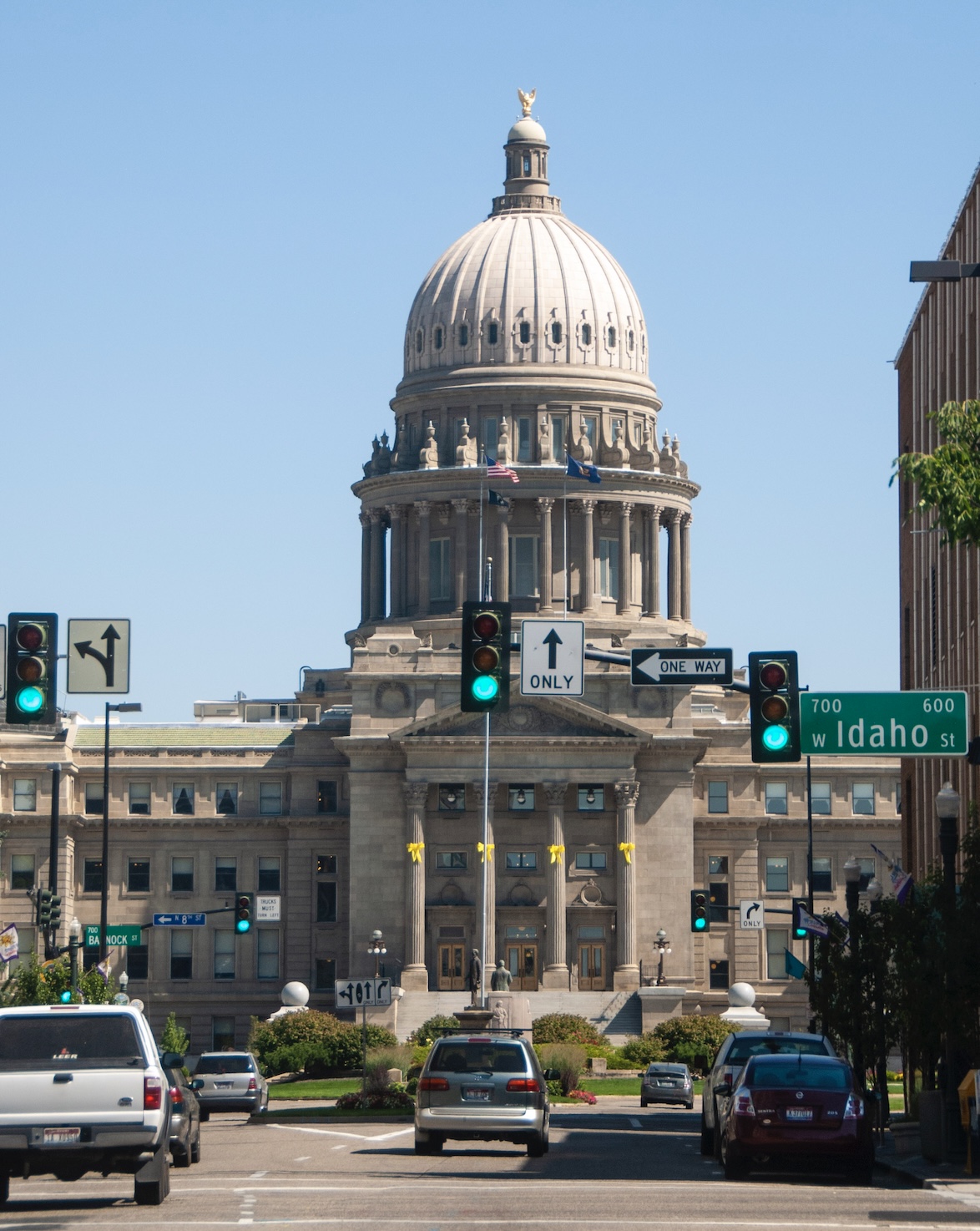 BOISE, Idaho — Governor Brad Little joined U.S. Forest Service Chief Tom Schultz and Idaho Department of Lands Director Dustin Miller on Friday to renew and expand Idaho’s Shared Stewardship agreement with the federal government — a move aimed at increasing the pace and scale of forest management across the state. The updated agreement establishes a collaborative framework between the U.S. Forest Service and the State of Idaho to strengthen policies related to forest restoration, land management, and wildfire mitigation “across Idaho’s forests and nearby communities.” Building on the landmark 2018 Shared Stewardship agreement, the new plan deepens joint efforts to boost timber production, accelerate wildland restoration, and expand forest health projects on national forests and adjacent state and private lands. The partnership reaffirms each side’s commitment to proactive landscape management as fire seasons grow increasingly longer and more intense.
BOISE, Idaho — Governor Brad Little joined U.S. Forest Service Chief Tom Schultz and Idaho Department of Lands Director Dustin Miller on Friday to renew and expand Idaho’s Shared Stewardship agreement with the federal government — a move aimed at increasing the pace and scale of forest management across the state. The updated agreement establishes a collaborative framework between the U.S. Forest Service and the State of Idaho to strengthen policies related to forest restoration, land management, and wildfire mitigation “across Idaho’s forests and nearby communities.” Building on the landmark 2018 Shared Stewardship agreement, the new plan deepens joint efforts to boost timber production, accelerate wildland restoration, and expand forest health projects on national forests and adjacent state and private lands. The partnership reaffirms each side’s commitment to proactive landscape management as fire seasons grow increasingly longer and more intense.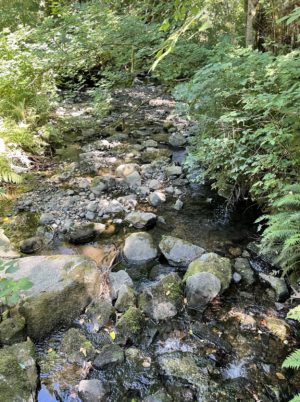 The Washington Forest Protection Association (WFPA) announced last week that it would file litigation against Washington state. The lawsuit will challenge a new buffer rule by the Washington State Forest Practices Board. The new rule expands the required no-cut buffers around non-fish-bearing streams in the state, requiring forestland owners to leave more trees uncut. WFPA states that it believes the new rule is a result of the Washington state Department of Ecology “misinterpreting” a federal water temperature standard. The statement added that the financial cost of implementing the rule is so large that it “justifies a judicial review.” The group also painted the creation of the new rule as a break from the state’s tradition of collaboration with other stakeholders. …“The rule overreaches the law, ignores on-the-ground realities, adds costly and unnecessary regulations, and offers little to no benefit for salmon recovery.”
The Washington Forest Protection Association (WFPA) announced last week that it would file litigation against Washington state. The lawsuit will challenge a new buffer rule by the Washington State Forest Practices Board. The new rule expands the required no-cut buffers around non-fish-bearing streams in the state, requiring forestland owners to leave more trees uncut. WFPA states that it believes the new rule is a result of the Washington state Department of Ecology “misinterpreting” a federal water temperature standard. The statement added that the financial cost of implementing the rule is so large that it “justifies a judicial review.” The group also painted the creation of the new rule as a break from the state’s tradition of collaboration with other stakeholders. …“The rule overreaches the law, ignores on-the-ground realities, adds costly and unnecessary regulations, and offers little to no benefit for salmon recovery.”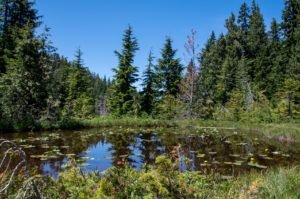 As the US Forest Service considers the future management of the Tongass National Forest, I hope that Alaska’s congressional delegation will listen to what Southeast Alaskans already know: Wild salmon are one of the Tongass’ most valuable resources. If we leave the trees standing and protect the habitat that fish need, the Tongass will continue to generate billions of dollars in natural dividends, in turn supporting thousands of fishing jobs and providing millions of pounds of nutritious seafood year after year. …For decades, Southeast Alaska’s communities and fishermen have fought industrial logging in the Tongass. …The harmful impacts of industrial logging on Southeast Alaska’s salmon watersheds and our natural dividends are not hypothetical. Protecting the Tongass is the most cost-effective way to improve ecosystem productivity and ensure the well-being for all who call Southeast home.
As the US Forest Service considers the future management of the Tongass National Forest, I hope that Alaska’s congressional delegation will listen to what Southeast Alaskans already know: Wild salmon are one of the Tongass’ most valuable resources. If we leave the trees standing and protect the habitat that fish need, the Tongass will continue to generate billions of dollars in natural dividends, in turn supporting thousands of fishing jobs and providing millions of pounds of nutritious seafood year after year. …For decades, Southeast Alaska’s communities and fishermen have fought industrial logging in the Tongass. …The harmful impacts of industrial logging on Southeast Alaska’s salmon watersheds and our natural dividends are not hypothetical. Protecting the Tongass is the most cost-effective way to improve ecosystem productivity and ensure the well-being for all who call Southeast home.  TROY, Montana — Vincent Logging, a family-owned logging company in Libby is working with Hecla Mining Company to manage its forested lands for wildlife habitat. It’s a 15-hundred acre research project to determine which management techniques provide the best habitat for endangered species. …It’s forest land in the Bull Lake area on Hecla Mining property near Troy. “We’re going to create grizzly bear habitat or enhance existing habitat for the bear,” he said. “Doing so, will enhance habitat for all the other critters that are living in here or that might live in here. We’re also studying it for success or failure at the same time.” Chas said thinning small diameter trees opens the area to create more plants that grizzlies like to eat. Larger diameter trees and thickets are left untouched to create a safe haven for the bears.
TROY, Montana — Vincent Logging, a family-owned logging company in Libby is working with Hecla Mining Company to manage its forested lands for wildlife habitat. It’s a 15-hundred acre research project to determine which management techniques provide the best habitat for endangered species. …It’s forest land in the Bull Lake area on Hecla Mining property near Troy. “We’re going to create grizzly bear habitat or enhance existing habitat for the bear,” he said. “Doing so, will enhance habitat for all the other critters that are living in here or that might live in here. We’re also studying it for success or failure at the same time.” Chas said thinning small diameter trees opens the area to create more plants that grizzlies like to eat. Larger diameter trees and thickets are left untouched to create a safe haven for the bears.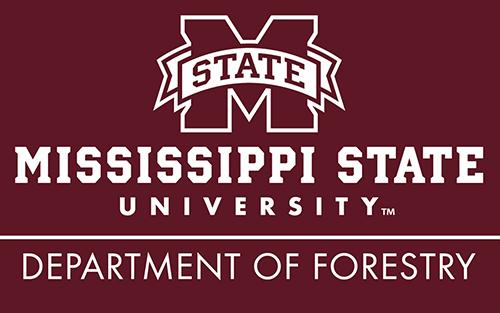


 Reforms to Australia’s nature laws have passed federal parliament. A longstanding exemption that meant federal environment laws did not apply to native logging has finally been removed from the Environment Protection and Biodiversity Conservation Act. Native forest logging will now be subject to national environmental standards – legally binding rules supposed to set clear goals for environmental protection. This should be a win for the environment, and some have celebrated it as an end to native forest logging in Australia. But the reality is such celebrations are premature. We don’t have all the details of the new standards, or know how they will be enforced and monitored. Federal Environment Minister Murray Watt has told the forestry industry, including in Tasmania, that native forest operations will continue as usual. In an interview with ABC Radio Hobart, he said the changes keep day-to-day forestry approvals with the state government, but introduce stronger federal oversight.
Reforms to Australia’s nature laws have passed federal parliament. A longstanding exemption that meant federal environment laws did not apply to native logging has finally been removed from the Environment Protection and Biodiversity Conservation Act. Native forest logging will now be subject to national environmental standards – legally binding rules supposed to set clear goals for environmental protection. This should be a win for the environment, and some have celebrated it as an end to native forest logging in Australia. But the reality is such celebrations are premature. We don’t have all the details of the new standards, or know how they will be enforced and monitored. Federal Environment Minister Murray Watt has told the forestry industry, including in Tasmania, that native forest operations will continue as usual. In an interview with ABC Radio Hobart, he said the changes keep day-to-day forestry approvals with the state government, but introduce stronger federal oversight.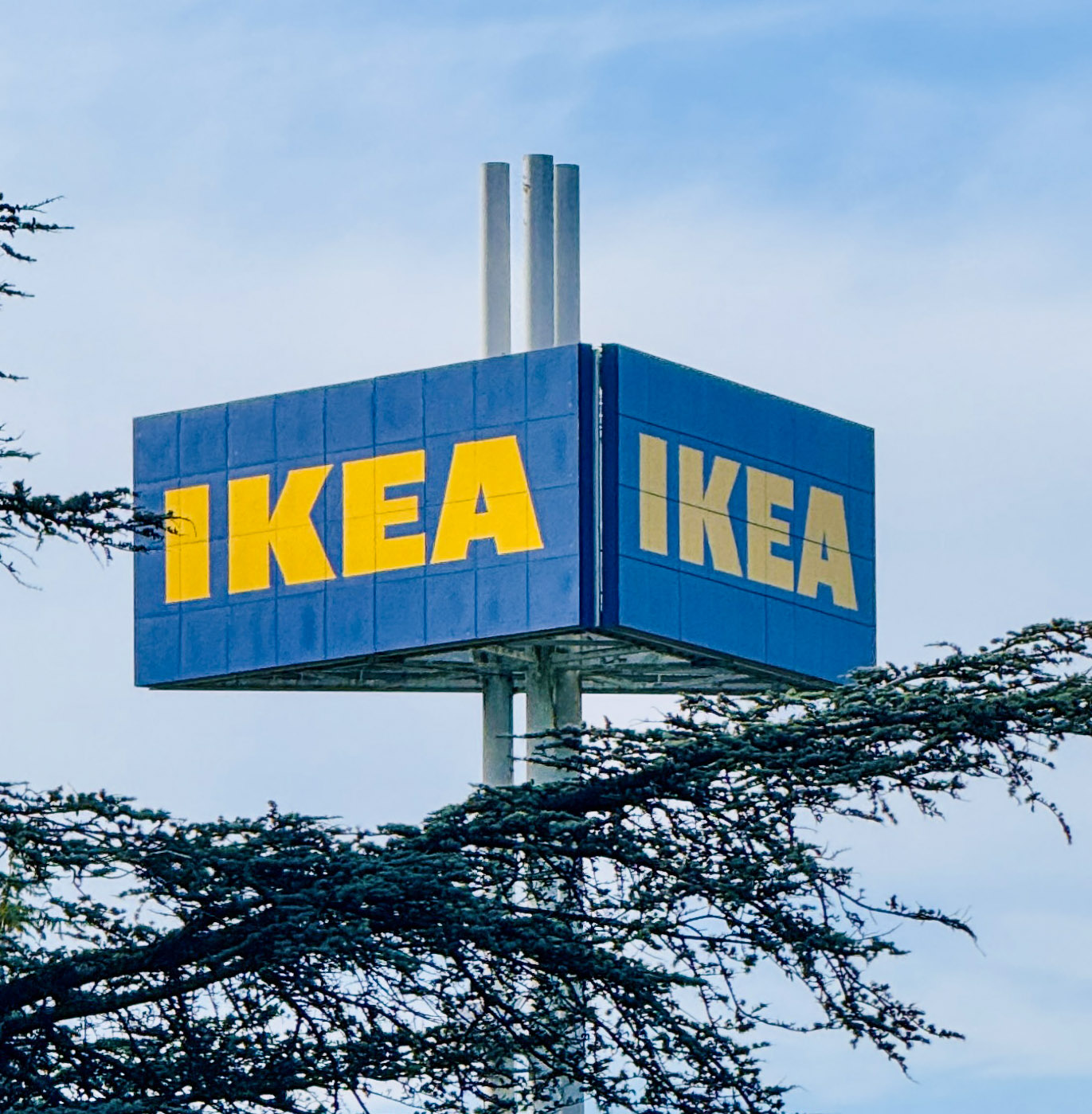 The opening of IKEA in New Zealand comes as a rural community worries about the fire risk from pine plantations. Since 2020 IKEA has converted six Central Hawke’s Bay farms into pine forestry…This move, combined with the sale of [local] farms to overseas forestry companies, is sparking concerns from locals about the loss of farmland and the risks associated with converting large areas into pines. …Porangahau farmer James Hunter wants New Zealanders to witness the extent of farmland being planted in forestry. Most of IKEA’s 4300 hectares of forestry in Central Hawke’s Bay is near the village of Porangahau, where about 200 hectares of its pine trees went up in flames in October and took days to extinguish because of the high winds grounding helicopters. It’s fires like this that have rural communities on edge, because they say even if the blaze starts on nearby farmland, the forests contain the fuel that feeds them.
The opening of IKEA in New Zealand comes as a rural community worries about the fire risk from pine plantations. Since 2020 IKEA has converted six Central Hawke’s Bay farms into pine forestry…This move, combined with the sale of [local] farms to overseas forestry companies, is sparking concerns from locals about the loss of farmland and the risks associated with converting large areas into pines. …Porangahau farmer James Hunter wants New Zealanders to witness the extent of farmland being planted in forestry. Most of IKEA’s 4300 hectares of forestry in Central Hawke’s Bay is near the village of Porangahau, where about 200 hectares of its pine trees went up in flames in October and took days to extinguish because of the high winds grounding helicopters. It’s fires like this that have rural communities on edge, because they say even if the blaze starts on nearby farmland, the forests contain the fuel that feeds them.
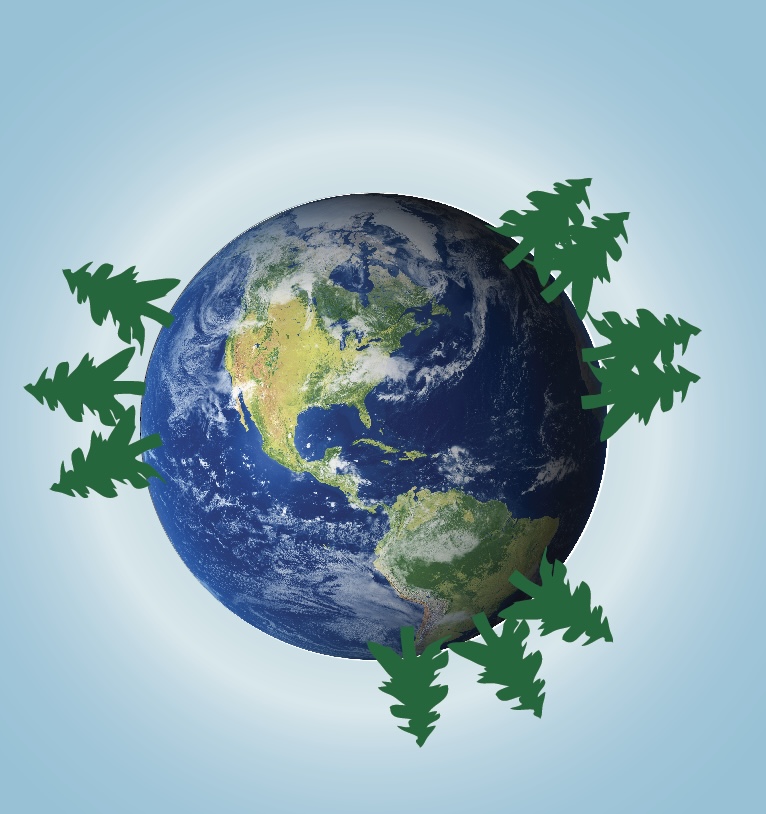 The total forest area in the world is 4.1 billion hectares, or 32 per cent of Earth’s total surface area. The tropics are home to the majority of the world’s forests – 45 per cent – while the rest is mainly found in boreal, temperate and subtropical zones. Since 1990, 489 million hectares of forest have been lost to deforestation… While the rate of deforestation is actually slowing, so is the rate of forest expansion, dropping from 9.88 million hectares per year from 2000-2015 to 6.78 million hectares per year in the decade to 2025. Below are the top five countries with the biggest forests as of 2025, according to forest area:
The total forest area in the world is 4.1 billion hectares, or 32 per cent of Earth’s total surface area. The tropics are home to the majority of the world’s forests – 45 per cent – while the rest is mainly found in boreal, temperate and subtropical zones. Since 1990, 489 million hectares of forest have been lost to deforestation… While the rate of deforestation is actually slowing, so is the rate of forest expansion, dropping from 9.88 million hectares per year from 2000-2015 to 6.78 million hectares per year in the decade to 2025. Below are the top five countries with the biggest forests as of 2025, according to forest area: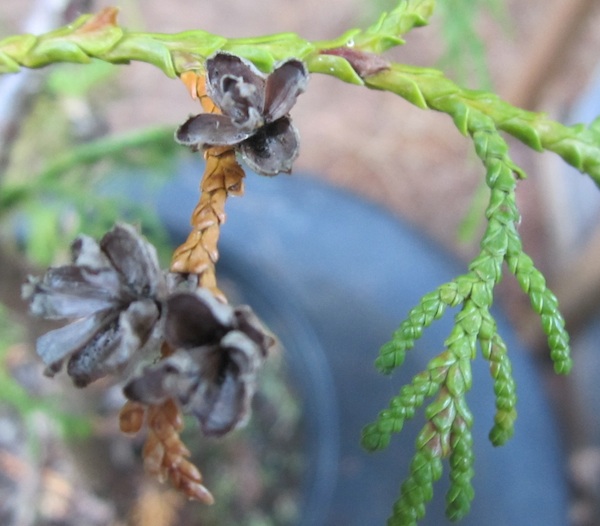

 Illinois — Four-legged reinforcements may be enlisted to help battle invasive buckthorn in Lake County forest preserves. The idea is in the formative stage, but forest district commissioners appear amenable to launching a pilot program to determine if grazing goats or sheep can help manage the pesky invaders. Buckthorn and other woody invasive species are considered among the greatest threats to natural areas across the region, and in Lake County comprise more than 52% of all trees, according to the Lake County Forest Preserve District. …“While grazing is not anticipated to fully replace herbicides or other invasive control practices, it could provide a potential alternative to accomplish objectives in a cost-effective manner,” according to information being presented this week to forest board committees. The pilot agreement likely would allow six to eight sheep or goats to graze on two or three acres of district land for up to four years.
Illinois — Four-legged reinforcements may be enlisted to help battle invasive buckthorn in Lake County forest preserves. The idea is in the formative stage, but forest district commissioners appear amenable to launching a pilot program to determine if grazing goats or sheep can help manage the pesky invaders. Buckthorn and other woody invasive species are considered among the greatest threats to natural areas across the region, and in Lake County comprise more than 52% of all trees, according to the Lake County Forest Preserve District. …“While grazing is not anticipated to fully replace herbicides or other invasive control practices, it could provide a potential alternative to accomplish objectives in a cost-effective manner,” according to information being presented this week to forest board committees. The pilot agreement likely would allow six to eight sheep or goats to graze on two or three acres of district land for up to four years.